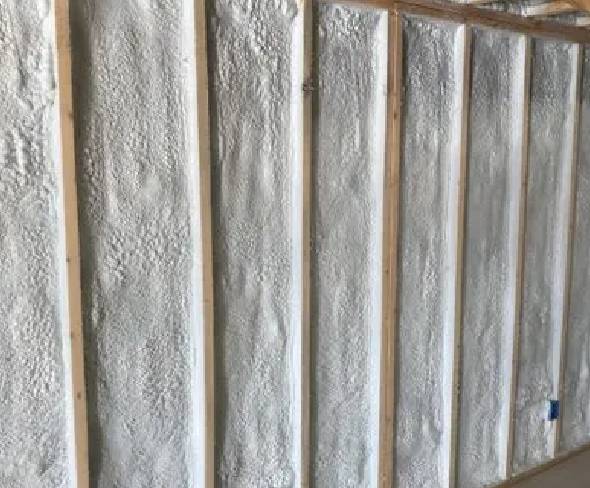
Superior Thermal & Energy Efficiency Insulation Serving All of South Central Wisconsin
High R-Value Per Inch for Greater Design and Construction Flexibility
M Corbond III closed-cell spray polyurethane foam (SPF) is a premium insulation perfectly suited for the building envelope. It outperforms competing closed-cell spray foam systems under many conditions. With an extremely high R-value, it acts as a barrier to keep the indoors from the outside climate, creating thermal, air and moisture isolation.
Easy to use and fast to install when installed correctly, it will not shrink or settle, so its thermal and acoustical performance lasts the life of a structure. JM Corbond II SPF and its unique Lavender color have become a symbol of uncompromising quality, performance and environmental commitment.
WALLS THAT WORK
JM Corbond III SPF successfully achieves thermal, air and moisture isolation. Both the indoor and outdoor climates are effectively displaced out of the cavity permanently as JM Corbond III SPF is installed in its seamless fully adhered form, so you get walls that work, no matter what.
See our Q & A below for additional information about the Corbond product:
Does Corbond need venting like conventional fibrous insulations?
No. Corbond does not need venting and meets the International Residential Code (IRC) requirements for unvented cathedral zed attics. Venting was designed to carry moisture out of fibrous insulation so it can maintain its thermal efficiency and minimize the damaging effects of condensation on hidden building surfaces.
With Corbond, no air can enter into or through the product, as it’s a solid cellular foam. Since no air or moisture can get in or around Corbond, it is not necessary to be vented off.
How does Corbond control moisture movement and condensation?
Most damaging moisture within a building envelope cavity is the result of warm, moist inside air being exchanged with the cold dry air inside the insulation cavity. As the moisture in the warm air contacts a cold surface, it condenses, forming dew and/or frost within the insulation.
Because Corbond Closed Cell spray foam does not allow the movement or exchange of air within the cavity, this moisture movement and condensation does not occur. Corbond is ideal for use in climates where buildings are both heated and air-conditioned (mixed climates) because the situation is reversed in summer with the potential for moisture to form on the back of the interior vapor retarder if fiber insulation is used.
What is the difference between Corbond and open cell foam?
Corbond is a closed cell product encapsulating high R-value insulating gas (like high tech windows). Open cell foam uses air (like glass fiber), remains soft (like angel food cake) and can take on humidity and water.
Corbond creates a barrier against humidity and will not take on water. Corbond has twice the R-value of open cell foam per inch, allowing for maximum energy savings even in thin wall and roof construction.
At what point of construction is Corbond sprayed into place?
Corbond Closed Cell spray foam is applied before the sheetrock is put in place but after plumbers and electricians have completed rough-in work. The spray-in-place product creates a bedding around the popes and closes all penetrations in and through the exterior walls of the structure which creates a nearly monolithic insulating blanket.
Corbond can be installed quickly with an average house of 2000 square feet taking a trained crew only 6 to 7 hours to complete.
Is Corbond environmentally friendly?
Yes! The Corbond Closed Cell spray foam product uses a new generation of environmentally friendly ingredients. Corbond now contains no ozone-depleting substances.
Its superior insulating capabilities dramatically reduce heating and cooling demands, reducing harmful emissions from power plants and home heating units.
What happens if the owners want to add an electrical outlet once Corbond is installed?
If an outlet must be added, Corbond Closed Cell foam spray drills more easily than wood. There is also typically a small space left between the wallboard and the Corbond so a wire can slide through.
Can you drill holes in existing walls and fill them with Corbond?
No. When Corbond expands it is very strong. As a result, it may distort a closed wall cavity and then set up hard. Corbond is always sprayed into an open cavity which allows for better job quality control because the technician can see what is being insulated.
How long does Corbond last?
Indefinitely. As an inert, long-lasting polymer plastic, a house wall or commercial structure is the perfect place for Corbond Closed Cell foam spray to do its job for a very long time. Contact Us to learn more.
Give FoamTech Insulation of Wisconsin, LLC a call today at (608) 873-6188 to learn more.
We service all of South-Central Wisconsin.
